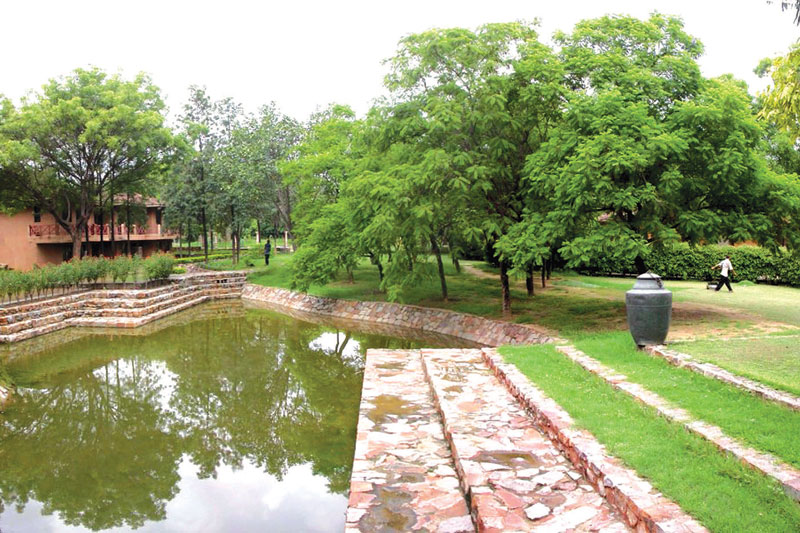Design
Coloured Hats and Landscape Design: On Sanskriti Kendra | Nikhil Dhar
LA 43 |
|
|
|
|
| A cultural complex that provides space for crafts persons to live and work, the Sanskriti Kendra illustrates how traditional spaces can be made relevant to these contemporary times through the careful play of material and the creation of unique yet familiar spaces. A recipient of the Landmark Award, ISOLA Professional Awards 2012, the Sanskriti Kendra uses "historic references as tools to understand how natural ecology and cultural ecology can work together to produce a very contemporary and distinctively Indian landscape."
|
PROMOTER: Sanskriti Foundation
Founder- Padmashree Om Prakash Jain
Architect- Upal Ghosh & Associates
Landscape: Shaheer Associates
Construction- 1990 onwards
|
|
|
Edward de Bono is an author, inventor, consultant and a proponent of the deliberate
teaching of thinking as a subject. His books include Lateral Thinking, Tactics, How to have Creative Ideas and Teach Yourself to Think. As an avid student of de Bono's theories, I have tried to use some of his ideas, among them his tool of the Six Thinking Hats. Under this system, which aims to structure thinking for greater effectiveness, de Bono proposes that
any situation or problem be looked at in six ways (or under six hats). Under the white hat, one presents the facts; under the red hat, one says how one feels about the issue; under the black hat, one looks at the negative effects of the decision; under the yellow hat, one looks at the positive effects of the decision; under the green hat, one thinks of alternatives; and under the blue hat, one clarifies which kind of thinking is going on. He believes that thinking becomes clearer when the different parts that go into it are brought into the open.
What does de Bono's method have to do with the perception and appreciation of landscape as I stepped into Sanskriti Kendra one warm morning in September? Having practiced as a Landscape Architect for almost nineteen years now, I find it difficult, if not impossible to let my impression of any landscape space be primarily experiential. I had last enjoyed walking
through Sanskriti Kendra at a much more elemental level almost fifteen years ago and I wanted to go back to those simpler times, to let it seep into my perception. I was determined not to let thoughts on "rainwater strategies" and "the morphology of spaces" interrupt my enjoyment of the place.
I found myself fighting against analyzing the landscape design. That's when I realized that I could use the Thinking Hats system; the Red Hat for what I experienced and a modified White Hat for a more dispassionate analysis. How far it succeeded is debatable, but it did help me to enjoy the hours I spent at the Kendra, and allowed me to experience it on at least two levels on two different occasions.
|
|


|
|

| |
|
|
|